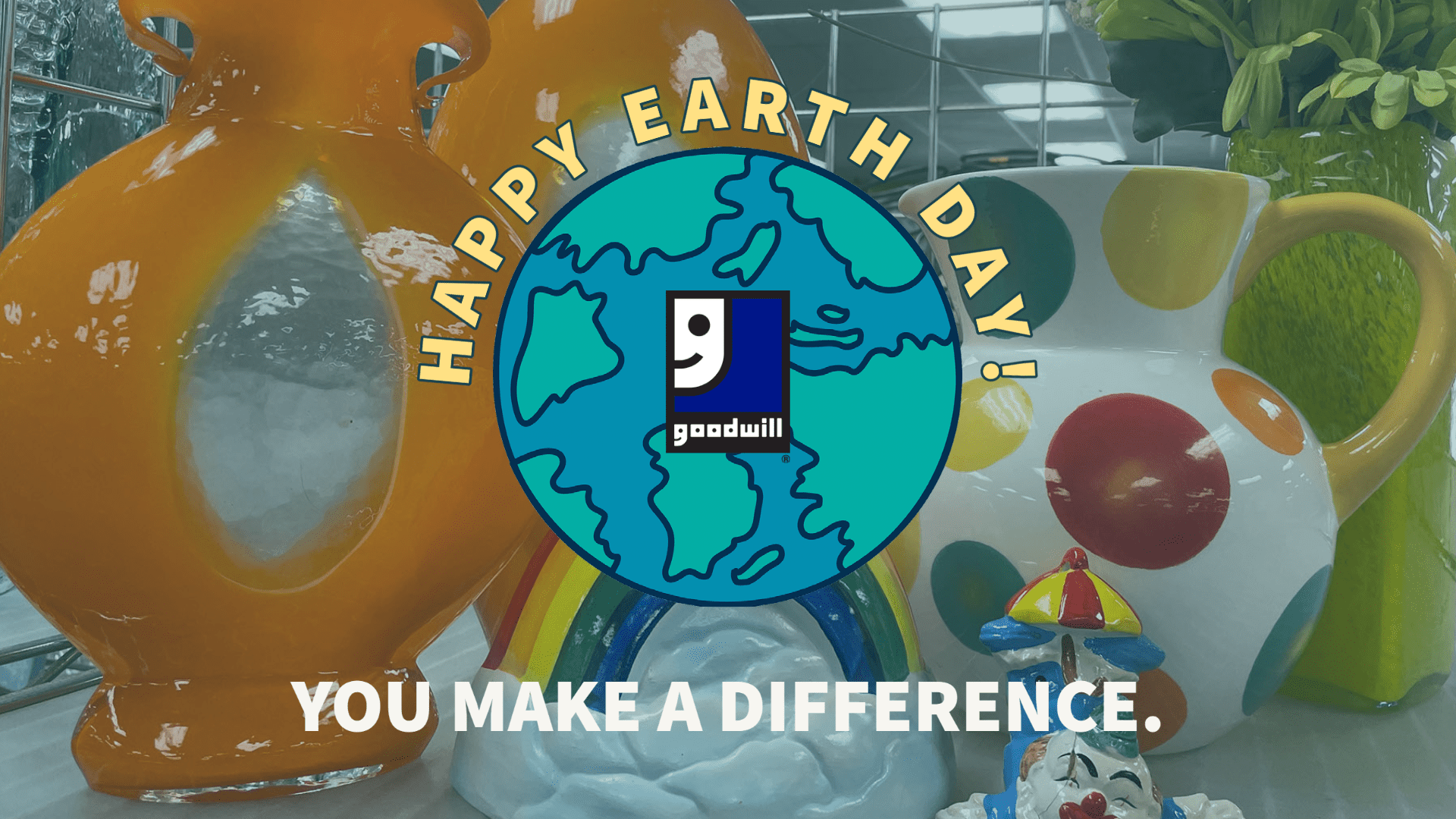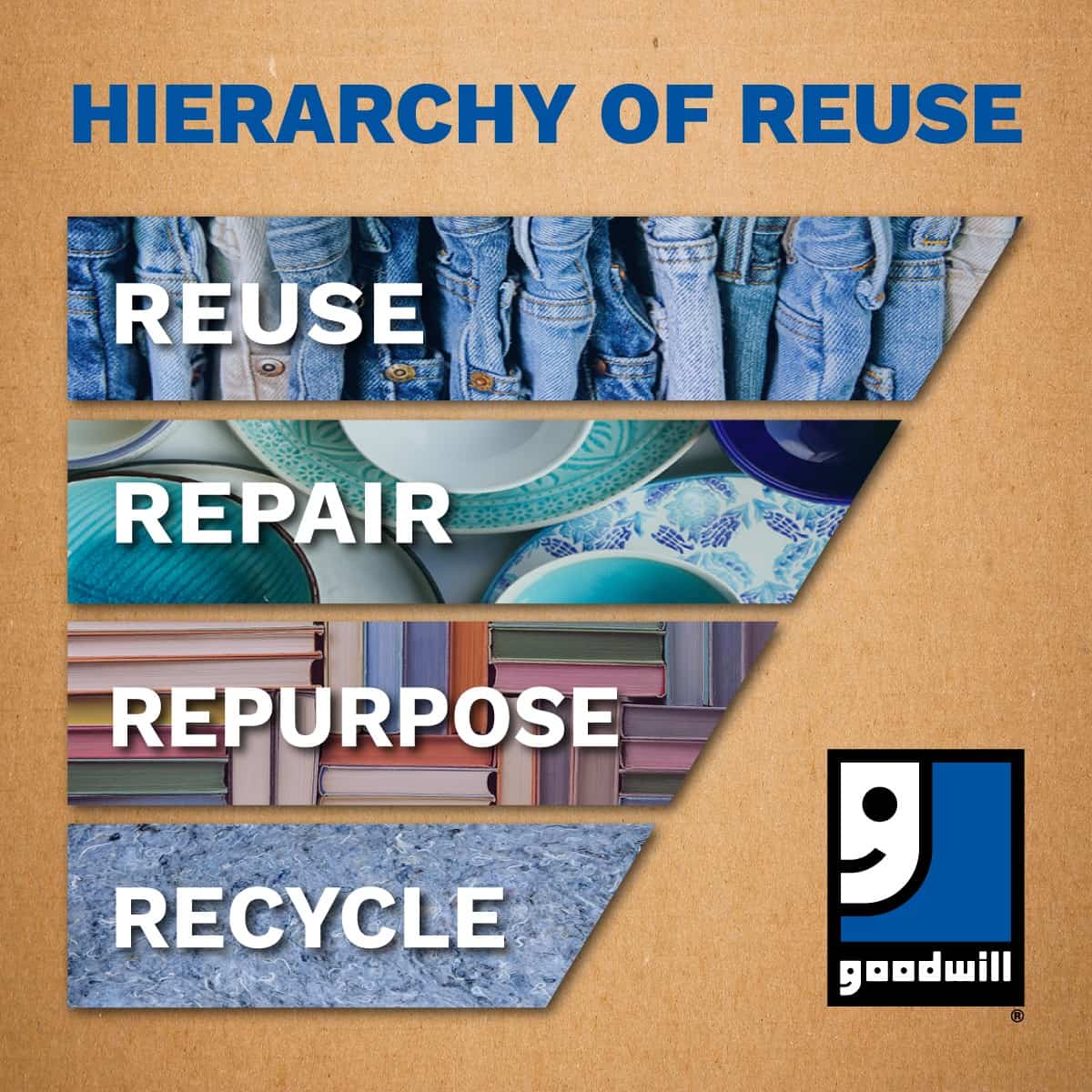Sustainability is at the core of Goodwill on Earth Day and every day

Earth Day is a great time to examine personal habits and think through ways to live more sustainably. Such thoughtfulness, when combined with perseverance, is a cornerstone of the long-term positive environmental impact necessary to protect natural resources and the planet.
Throughout the year Goodwill organizations around the globe recycle donations unsuitable for resell. (Unfortunately, they also must send some donations to landfills, but that's another story.) In fact, Goodwill is the world's largest non-government recycler. It's a path the organization chose from its beginning in 1902. Edgar J. Helms, who grew up in Iowa and founded Goodwill Industries International, once said, "Goodwill saves the waste in men and things." He understood the connection between health of the planet, the community and the individual.
The same holds true at Goodwill of the Heartland. Last year, we responsibly recycled nearly 10 million pounds of goods. Most of those pounds (more than 6 million) were in the form of textiles - materials made from fibers such as clothing and bedding. But we're also big recyclers of books, cardboard, shoes, personal accessories (like handbags and belts), cords, scrap metal and computers. As part of our partnership with Dell Reconnect, Goodwill of the Heartland recycled more than 225,000 pounds of computers and tech components in 2021.
While this is good news and better for the Earth than all of this stuff winding up in local landfills it is important to note that recycling is ideally the option of last resort. In a circular economy, which Goodwill supports and aims to facilitate, products are not only bought once but purchased repeatedly as need for the product rises and falls among different individuals. For instance, Sally purchases a new messenger-styled bag to use for work, but later receives a new bag she likes better at a company holiday party and decides to donate the bag she purchased to Goodwill, where it is later purchased by Jill as a new-to-her work bag. In an ideal situation, Jill would later donate the bag when she no longer needed it and yet another person would purchase and use it as it was originally intended to be used.
Earth Day: The Hierarchy of Reuse
In a system referred to as the "Hierarchy of Reuse" this is the top tier of sustainability and where Goodwill (as well as most of our shoppers and donors) prefers to operate. We hope to preserve the original state of an item for as long as possible. This extends the life of an item or product, but is also largely dependent on the original manufacturing quality of that item. For instance, many people do their best to reuse consumer plastics, like shopping bags, but durability often dictates the number of times and purpose of reuse.
The next tier requires the owner to make some sort of modification to continue using the item for its intended purpose. A button may need to be tightened or replaced. Pants may need to be cut and hemmed. A shoe heel may need to be glued. The key factor to this group is that the repairs are necessary to continue to use the item for its original purpose. Clothing continues as clothing, blenders as blenders and lamps as lamps.
Crafty people gravitate toward the next tier of the hierarchy: Repurpose. In this tier modifications are intended to adapt an item to a new life as a different type of use. An example would be a shopper seeking a certain type or size of picture frame that she plans to purchase, sand, repaint, insert with wire screen and use as a jewelry holder. An example on the donor side of the equation would be someone who sews quilts who decides to donate fabric remnants to benefit others who like to sew doll clothing or create other small fabric projects. The rise of how-to blogs and videos have significantly increased interest in repurposing.
So the items recycled by Goodwill have typically (and hopefully) already traveled through the other tiers. With the continued depletion of raw natural resources used to make new consumer goods, Goodwill and other social enterprises that enable reusing, repairing, repurposing and (ultimately) recycling play an increasingly important role in environmental protection. Ongoing partnerships, programs and services reflect the beneficial role in Goodwill's landfill waste reduction.
Fortunately, your donation to Goodwill is not only a way to recycle and live sustainably. Our job training, human service and placement programs are fueled by our stores and yield social and economic benefits as well!

Share this:
- Click to share on Facebook (Opens in new window)
- Click to share on Pinterest (Opens in new window)
- Click to share on Twitter (Opens in new window)
- More
- Click to email a link to a friend (Opens in new window)
- Click to print (Opens in new window)
- Click to share on Pocket (Opens in new window)
- Click to share on Tumblr (Opens in new window)
- Click to share on Reddit (Opens in new window)
- Click to share on LinkedIn (Opens in new window)
- Click to share on WhatsApp (Opens in new window)
- Click to share on Telegram (Opens in new window)
